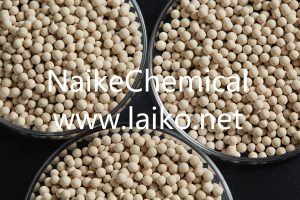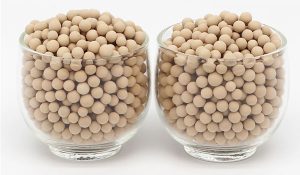4A Molecular Sieve Can Be Adsorbed According to the Size of the Molecule
As we all know, the structural characteristics of 4A molecular sieve determine its good adsorption performance, catalytic performance and ion exchange performance. Where are these three performances mainly manifested?
1. Performance characteristics of 4A molecular sieve
Adsorption performance: The pore size of 4A molecular sieve is average, and when the dynamic diameter of the molecule is smaller than the pore size of the molecular sieve, it can enter the inside of the channel for adsorption. 4A molecular sieve is like a sieve that separates gas and liquid. The adsorption of 4A molecular sieve is a physical change process, not a chemical change process. After adsorption saturation, 4A molecular sieve can only recover its adsorption capacity by removing small molecules accumulated inside and outside the molecular sieve. This process is the reverse of adsorption and is called desorption or regeneration. 4A molecular sieve can be reused within its service life without affecting its adsorption performance.
Catalytic properties: Molecular sieves have common and average pore structure, large specific surface area, strong acid intermediates and redox active intermediates, strong Coulomb field can be characterized in the pores, and are good catalysts and catalyst supports.
Ionic exchange: mainly refers to the ion exchange in the channel of 4A molecular sieve, the negative charge of the balance skeleton and the ion exchange in the environment. The ion exchange of zeolites is usually stopped in aqueous solution. Using molecular sieves to complete the selective adsorption of specific cations can effectively remove radioactive cations in nuclear wastewater. Through ion exchange, the pore size of the molecular sieve can also be changed, and the electric field distribution inside the molecular sieve can be adjusted, thereby adjusting the performance of the molecular sieve.
2. The activity temperature and activity time of 4A molecular sieve
The pore size of 4A molecular sieve is 4A, which can filter any molecule smaller than 4a. 4A molecular sieve is one of the most widely used adsorbents in industrial production. It is widely used in daily production, and can be used for industrial gas dehydration, methanol, ethanol, hydrogen sulfide, sulfur dioxide, carbon dioxide, ethylene, propylene, etc. Since the pore size of 4A molecular sieve is only 4A, it can only adsorb certain low-molecular and small-molecular compounds, and some molecules larger than 4A (propane) cannot be adsorbed. During the use of 4A molecular sieve, attention must be paid to prevent the adsorption of oil and water, because it is necessary to avoid contact with oil and water during use, otherwise it may cause toxicity or saturation, resulting in huge economic losses.
Activation temperature and activation time of 4A molecular sieve: Under ultra-low temperature conditions, it is impossible to remove all the water in the pores of carbon molecular sieve at 110 degrees Celsius. Within 8 hours of superheated steam, the water in the pores of the carbon molecular sieve is completely dried to 350 degrees Celsius. Freeze activated carbon molecular sieves in air at approximately 200 °C and store immediately in an air dryer. If permitted by standards, use dry N2 to maintain moisture in the air during refrigeration and storage to avoid absorption in the air. When the old carbon is absorbed, it should not only have 450 degrees Celsius, but also water vapor or rare gas to replace other chemicals in the carbon.



